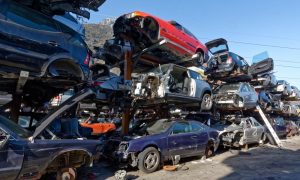A dependable turbine relies on early detection and timely action. Preventive maintenance uses a series of scheduled inspections to detect issues before they disrupt production. As small issues in gas and steam turbines can escalate quickly under heat, speed, and load, a disciplined inspection process will mitigate that risk.
Borescope (https://en.wikipedia.org/wiki/Borescope) technology enables teams to establish that proactive stance by allowing them to view the interior condition without disassembly. In addition, it creates a consistent data record which management can take advantage of for compliance and funding requests for maintenance.
What Is Preventive Maintenance?
Preventive maintenance is a planned approach to carrying out a set of tasks to keep the equipment operating the way it was designed to operate. Preventive maintenance enables the change from high-stakes guessing to regimented inspections, analysis of trending data, and risk-based decisions.
In the case of turbines, preventive maintenance leads to safer operations, decreases surprise outages, and allows for better outage utilization while maintaining a condition-based maintenance approach. Programs are normally structured around run hours, or start count, or capacity of any condition indicators, which will trigger specific activities.
How Borescope Fits In
Within a preventive maintenance program, borescope inspections provide engineers a direct view into the interior of the machine without taking the machine down to inspect. As a type of non-destructive testing, it greatly enhances decision making, and risk of damage to hardware is limited. In gas and steam turbines where access is tight borescope inspection becomes a key aspect of hot gas path inspection, and steam path inspection.
- Inspection of blades, vanes, combustor liners, diffusers, and seals from small accessible ports, while avoiding full disassembly.
- Obtaining modified and time-stamped images and timelines for defect trending, repair verification and asset integrity management processes.
- Assessing tip clearances, shroud wear, and seal rubs after cleaning and or minor rework and allow for unit closure checks.
- Cataloguing coating loss, thermal distress, and foreign object damage to provide insight to actual failure causes and returns workers to proper asset condition.
- Confirming suspected areas and limiting intrusive work scope based on noise and vibration analysis.
All of this information allows teams to inform outage planning based on asset condition instead of on the calendar.
Detecting Small Issues Early
A small surface issue easily turns to forced outage of the issue is not addressed in a timely manner. A borescope image will tell you pitting, rubbing on tips, coating loss, erosion and sometimes cracking, before any output impact. The teams then take the image from the current run and review against image data from the previous run to get rates of change, order the work, and review inspection frequency for gas and steam turbines.
If the resources align, using complimentary workflow methodologies of eddy current testing on exposed components should illuminate indications without having to commit to a full piece of equipment disassembly.
Reducing Forced Outages
Unplanned outages are much greater than any planned outages and they disrupt staffing, budget, and schedule. Unplanned outages are the quickest path to take risk out of the equation and process hidden defects by periods of work. The teams can:
- Defect order across sense of risk (run, monitor, repair now) remember to tag your action to impact on safety and availability/production.
- Pre-kitting parts, all tools and consumables so the repair workforce spends time moving towards compliance and not looking for items.
- Sequencing workpacks is essential to reduce open-close cycles and save critical-path hours.
- Validation of defect repair by contractor is done by close out pictures. See if they can take or validate work done and compare to the outputs referenced from baseline.
- Feeding PTW back to the lessons learnt and reliability centered maintenance/risk management plan reduces chance of repeat events down the road.
Having solid picture and measurements allows the engineer time to order parts and schedule vendors instead of making spontaneous observations when work can and cannot be done. Documented imaging provides fuel for the conversation with insurance and warranty matters – it provides evidence of what was the condition of the equipment prior to any repair.
Extending Turbine Life Cycles
Inspection, maintenance and imaging allow time, at the right time, and not only save hardware but improve out the longer you go. Early identification of defects means smaller repairs and clarity and assurance of efficiency erosion at a minimum over the long haul. Over numerous run cycles, repeating the right things means longer run intervals on the asset, relatively consistent output, and increased health of the gas and steam turbine fleet. You can visit this link to learn more about turbine cycle.
Over years and repeat activity, with the same experience, the ability to reduce frequency and correlation to performance to increase asset integrity and reduce life risk comfortably sits within the realm of reliability teams will be able to execute imaging protocol and use good judgement practices. Basically, create a feedback loop back to defect fix enclosures and maintenance hours to make the turbos safe, running and operation in years.





